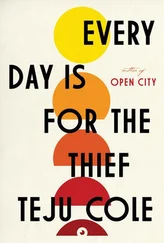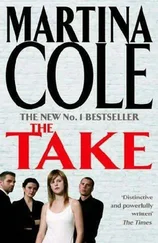Families that lost three of their seven members were not at all unusual. For us, the concept of three million New Yorkers dead from illness within the first five years of the millennium is impossible to grasp. We think it would be total dystopia; so, we think of such historical realities only as footnotes. We try to forget that other cities in other times have seen worse, that there isn’t anything that immunizes us from a plague of one kind or another, that we are just as susceptible as any of those past civilizations were, but we are especially unready for it. Even in the way we speak about what little has happened to us, we have already exhausted ourselves with hyperbole.
I’d been going on. It was Lise-Anne who saved me from myself by changing the subject. She said, But, Julius, you’re a shrink. I’ve always wondered about that. I’m obviously crazy, or I wouldn’t be with this guy over here. So never mind the bees or the plague and all that. Who’s the craziest person you’ve treated recently? I bet you get some really whacked-out ones. Or are you sworn to secrecy? We promise not to tell anyone.
I indulged them, and told them stories about my patients, about the alien visitations and government surveillance, the voices in the walls, the suspicions of family conspiracies. There is always a fund of humorous tales from the horror of mental illnesses, particularly in the ranks of the paranoid. I called on these stories now, even passing off some of my colleagues’ patients as my own. My friends laughed as I recalled a case in which the patient had “successfully” jammed signals from other planets, carefully lining every window in her apartment with aluminum foil, placing receptors elaborately woven from paper clips in the soles of her shoes, and always carrying a small piece of lead in each pocket, even when she was asleep. Paranoid schizophrenia lent itself especially well to such narratives, and the sufferers of the disease were good storytellers because they engaged in world building. Within the parameters of their own realities, these worlds were remarkably consistent: they only looked crazy from the outside.
Do doctors actually use the word crazy ? Moji asked. We most certainly do, I said. Some people, in fact, are simply nuts, and that’s what we write down in the chart. I did this just last week. Forty-nine-year-old salesman: I talked to him for a few minutes and wrote down, as he spoke: The patient is as crazy as a sack full of ferrets. Another patient I once diagnosed: Just plain nuts. I think you’d be surprised at what doctors actually say when no one is looking.
Do you know that shop near TriBeCa, Lise-Anne said, We Are Nuts About Nuts? Well, my friend said, I know I definitely am. There are actually lots of insane people in this town, maybe the majority of New Yorkers. Well, no, he went on, I don’t mean that. But, really, everyone just finds a way to cope, no one is completely free of mental problems, so I say let everyone sort themselves out. Insanity is used as an excuse for suppressing dissent, just as it has always been. Julius, I’m sure you know all about this: there used to be floating prisons in medieval Europe, ships of fools sailing from port to port, collecting the undesirables. People whom we would think of as a little depressed today were put through exorcisms. It was all about removing the contaminants from society.
And if we’re talking about real insanity, my friend went on, and I’m not going to pretend that doesn’t exist, if we’re talking about deep down, in-the-gut disjunction between actual reality and a sort of personally invented reality, well, there’s been plenty of that in my own family. What you said about Leiden, well, in a way, my family was Leiden. My father went crazy and became a cocaine fiend. Or maybe it was the other way around, maybe the cocaine came first. Anyway, he’s out there in South Carolina somewhere right this minute, looking to score some blow. That’s what he lives for. Understand that I use the word father in a loose sense. I haven’t seen the man in four years, and the times I saw him, I wish I hadn’t. My mom, on the other hand: six children from five different men. That’s kind of crazy, too, isn’t it? I mean, how do you not quit doing that after the third or fourth kid? I’ve got an older brother who’s doing time for dealing. And that’s without mentioning my uncle Raymond. Uncle Ray was a mechanic in the Atlanta area. He had a wife and three kids. Salt of the earth type, never strayed, never did drugs. Then, when I was eleven, he lost his mind over God-only-knows-what, and he went into the backyard and shot his brains out. His youngest kid, my cousin Yvette, who was seven at the time, found him.
A silence fell on the group. I knew the story. This was the appalling family background my friend had had to overcome to go to university and to graduate school, and to become an assistant professor in the Ivy League. Now, having spoken, he had a peaceful expression on his face. Ahead of us, in the lengthening shadows of afternoon, the parachutes had been folded and were being carted away on vehicles belonging to the Department of Parks and Recreation. The stuntsmen would probably get slapped with a charge of reckless endangerment and be fined. I suppose, Moji said at length, that the things black people have had to deal with in this country — and I don’t mean me or Julius, I mean people like you, who have been here for generations — the things you’ve had to deal with are definitely enough to drive anyone over the edge. The racist structure of this country is crazy-making.
Oh, man, Lise-Anne said, don’t give him excuses! We all laughed, with some relief. Lise-Anne was immediately likable. In contrast, I was struck by Moji’s brittleness, the defensiveness she seemed to have so readily at hand. Speaking of her boyfriend, whom I had not met yet, she’d demanded of me: Are you trying to find out if he’s black? I was startled. I assured her that no, I had no such interest. It was trite, it suggested a sort of unformed mind to me. But I found it appealing, and even sexual, and I suddenly imagined us together in a sexual situation. She was no Nadège; this attraction was of a different valency. I wasn’t even certain if I could term it attraction. But there was something interesting in the mood she gathered around her like a robe. She was forthright, she spoke freely, she was always spoiling for a fight, and yet she gave the impression of being an observer, a close watcher of people and words.
On our way out of the park, my friend and his girl broke off, and took a cab uptown. I walked along Central Park West with Moji. Again, I did most of the talking. I tried, again, to draw her out on the subject of recycling. She responded in yesses and nos, as though she knew well that I was prattling, filling in the silence. A pigeon with dark feathers, possibly the same one we had seen early in the afternoon, though I doubted it, hopped along the stone wall along the west side of the park, as if it were following us, then took sudden flight, and vanished into the trees for good. I asked her once more about her boyfriend, pretending to be interested. His name was John Musson. She had nothing to say about him. The spring night diminished what we said, absorbing our energy, so that after a while we merely walked along in silence. Once or twice I glanced up at her face, which just then seemed so focused, and so unpretty, and so complete in its allure. I was having such a difficult time reading her. Traffic growled low alongside us, the sound of impatient, churning engines, and gasoline smoke adding menace to the park’s perfumed world. At the subway on Eighty-sixth Street, I let her go.
THE PRACTICE OF PSYCHIATRY IS PARTLY ABOUT SEEING THE world as a collection of tribes. Take a set of individuals who have brains that, with regard to how they map reality, are more or less equal: differences among brains in this set, this ostensibly normal group, this control group, which constitutes the majority of humanity, are small. Mental well-being is mysterious, but this group is fairly predictable, and what little science has discovered about brain function and chemical signaling applies broadly. The right hemisphere processes in parallel, the left processes serially, and messages are passed more or less efficiently between the two by the corpus callosum. The whole organ nestles inside the skull, steadily improving at a range of astonishingly complex tasks, while getting worse at a few others. This is our picture of normality. Anecdotally the differences tend to be exaggerated — for important social reasons, people like to think that other people are totally unlike them — but these differences are, in reality, for most functions, rather small.
Читать дальше












